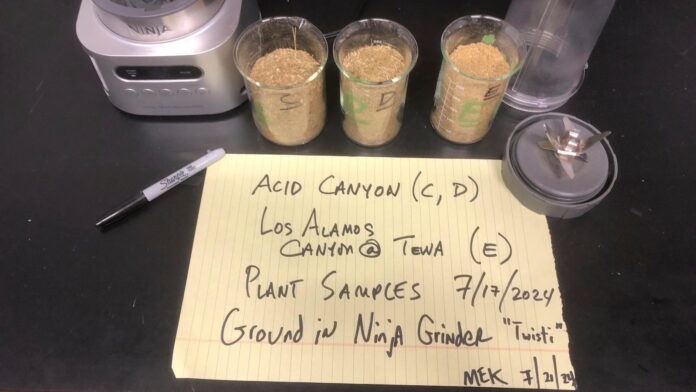ALBUQUERQUE, NM — Regulators are concerned about contamination at old factories at Los Alamos, the birthplace of the atomic bomb and the site of renewed efforts to produce key components for nuclear weapons.
A Northern Arizona University professor emeritus who analyzed soil, water and vegetation samples taken along a popular hiking and biking trail in Acid Canyon said Thursday that more extreme concentrations of plutonium were found there than at other publicly accessible sites he has studied in his decades-long career.
This also includes the land around the former federal government weapons factory at Rocky Flats in Colorado.
While outdoor enthusiasts may not be in immediate danger while hiking through the pine-lined canyon, Michael Ketterer, who specializes in detecting chemical fingerprints of radioactive materials, said state and local authorities should warn people to avoid contact with water in Acid Canyon.
“This is an unrestricted area. I’ve never seen anything like it in the United States,” the professor told reporters. “It’s just an extreme example of very high concentrations of plutonium in soils and sediments. Really, you know, it’s hiding in plain sight.”
Ketterer worked with the group Nuclear Watch New Mexico to collect the samples in July, a rainy period that often results in isolated downpours and runoff flowing through canyons and otherwise dry arroyos. Water was flowing through Acid Canyon when the samples were taken.
The work followed mapped by the group Earlier this year, that was based on a database from Los Alamos National Laboratory of plutonium samples from across the region.
Jay Coghlan, director of Nuclear Watch, said the detection of high levels of plutonium at the heart of Los Alamos is a concern, especially as the laboratory — under the direction of Congress, the U.S. Department of Energy and the National Nuclear Security Administration — prepares to begin producing the next generation of plutonium pits for the country’s nuclear arsenal.
He cited Acid Canyon as a place where a more thorough cleanup should have taken place decades ago.
“The cleanup at Los Alamos has been long overdue,” said Coghlan, who added that annual spending on plutonium pit operations has approached $2 billion in recent years, while the budget for cleaning up the legacy waste is expected to decline in the next fiscal year.
From 1943 to 1964, liquid waste from the laboratory’s nuclear research was piped into the canyon. The canyon is one of the tributaries that eventually flow through the San Ildefonso Pueblo area on its way to the Rio Grande.
The federal government began cleaning up Acid Canyon in the late 1960s, eventually transferring the land to Los Alamos County. Officials determined in the 1980s that conditions in the canyon met DOE standards and were protective of human health and the environment.
The Energy Department’s Office of Environmental Management in Los Alamos said Thursday it was preparing a response to Ketterer’s findings.
According to Ketterer and Coghlan, concerns now focus on the continued migration of plutonium downstream, its absorption by plants and the formation of contaminated ash after wildfires.
Ketterer described it as a problem that can’t be solved, but said residents and visitors would be pleased to know it’s there.
“It really can’t be undone,” he said. “I think we can go to Acid Canyon and scoop out a lot more contaminated stuff and keep doing it. It’s kind of like trying to pick up salt that’s been thrown in a shag rug. It’s crazy to think you’re going to get it all.”



